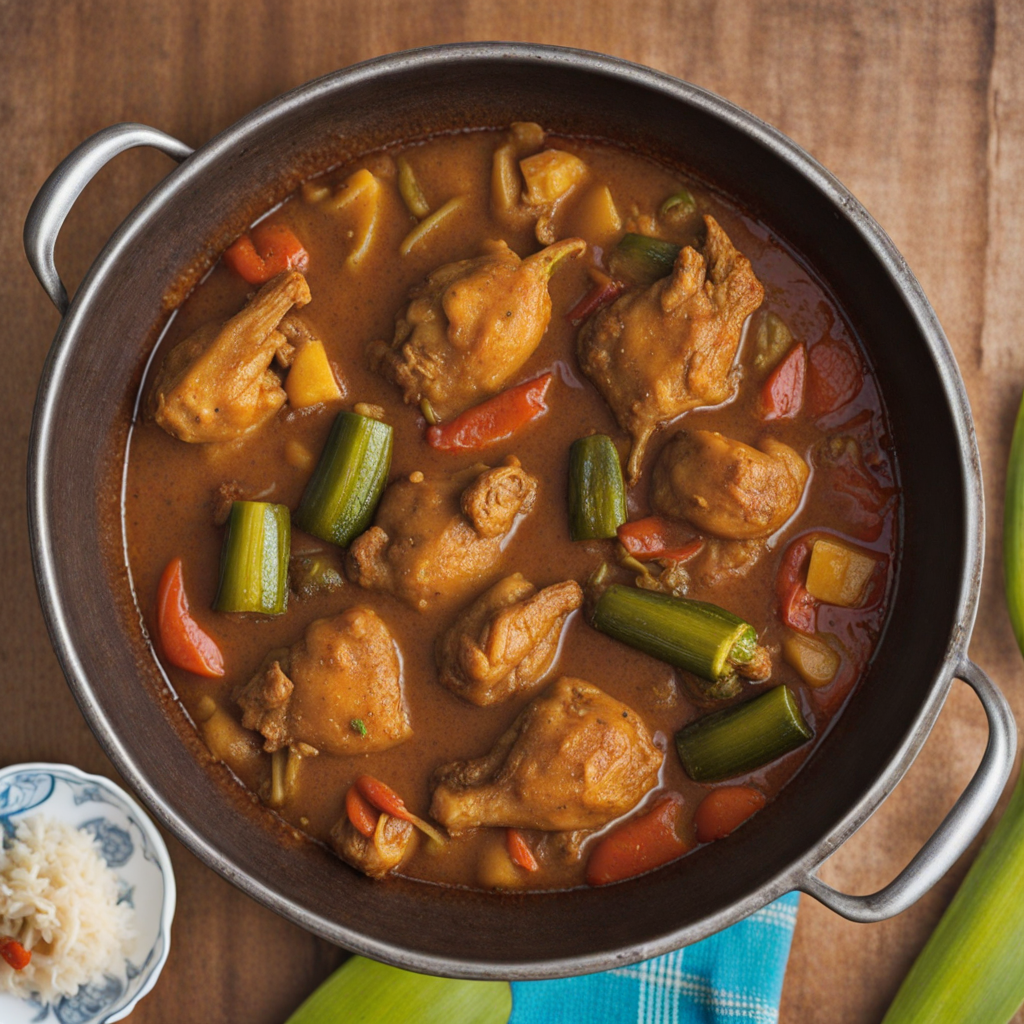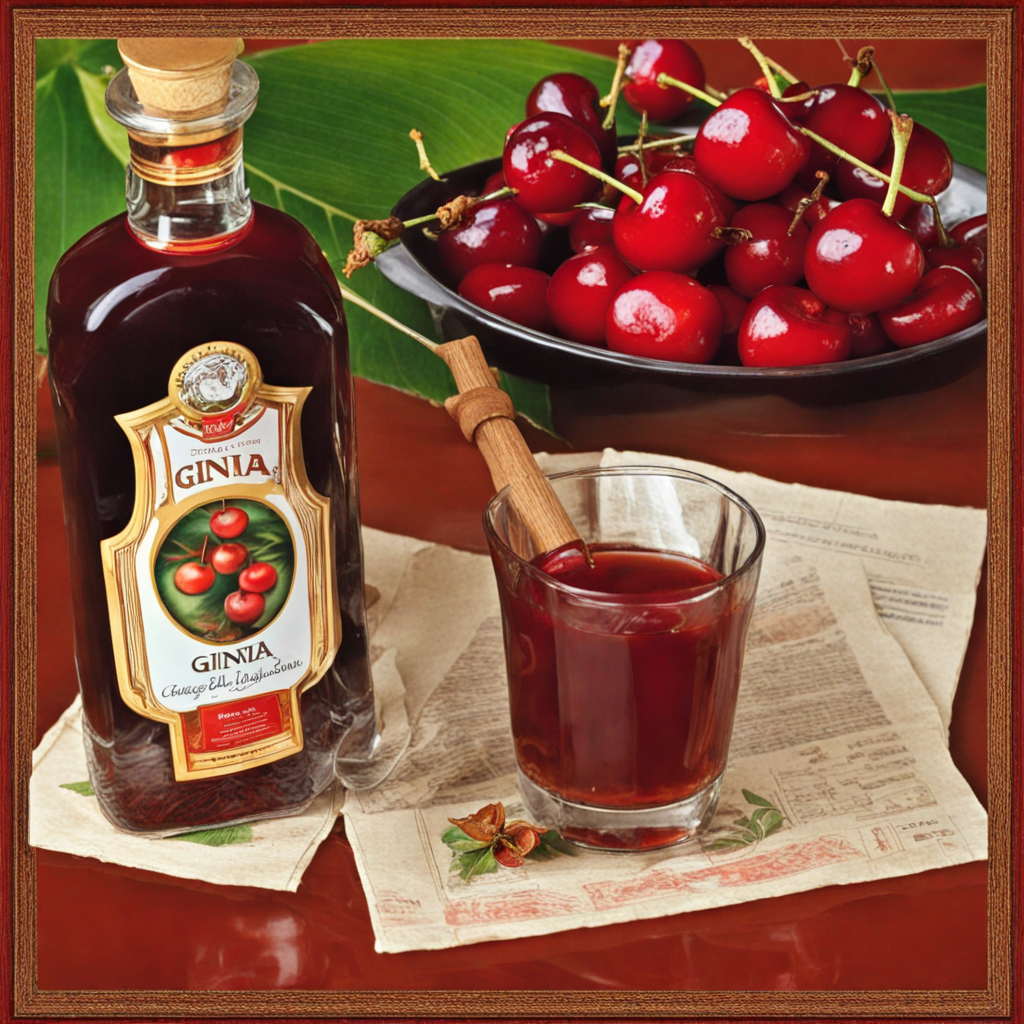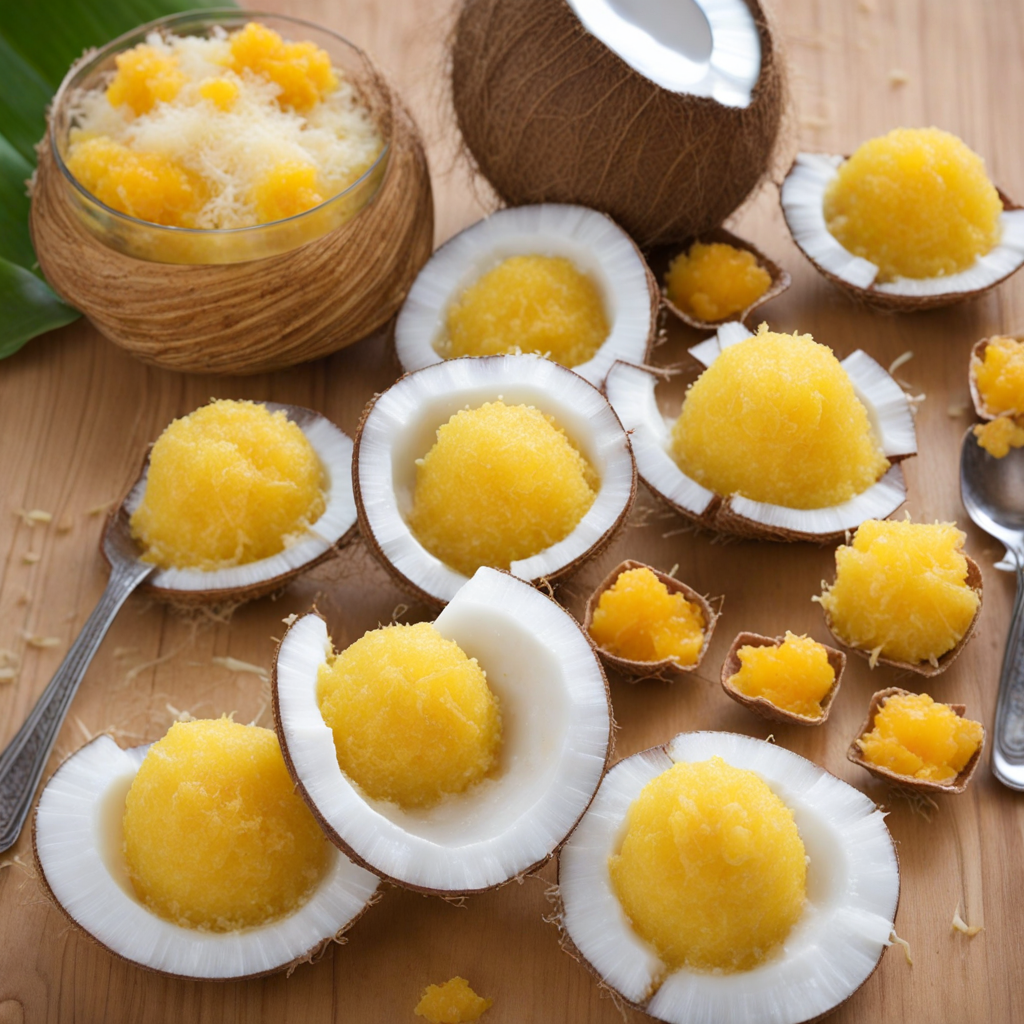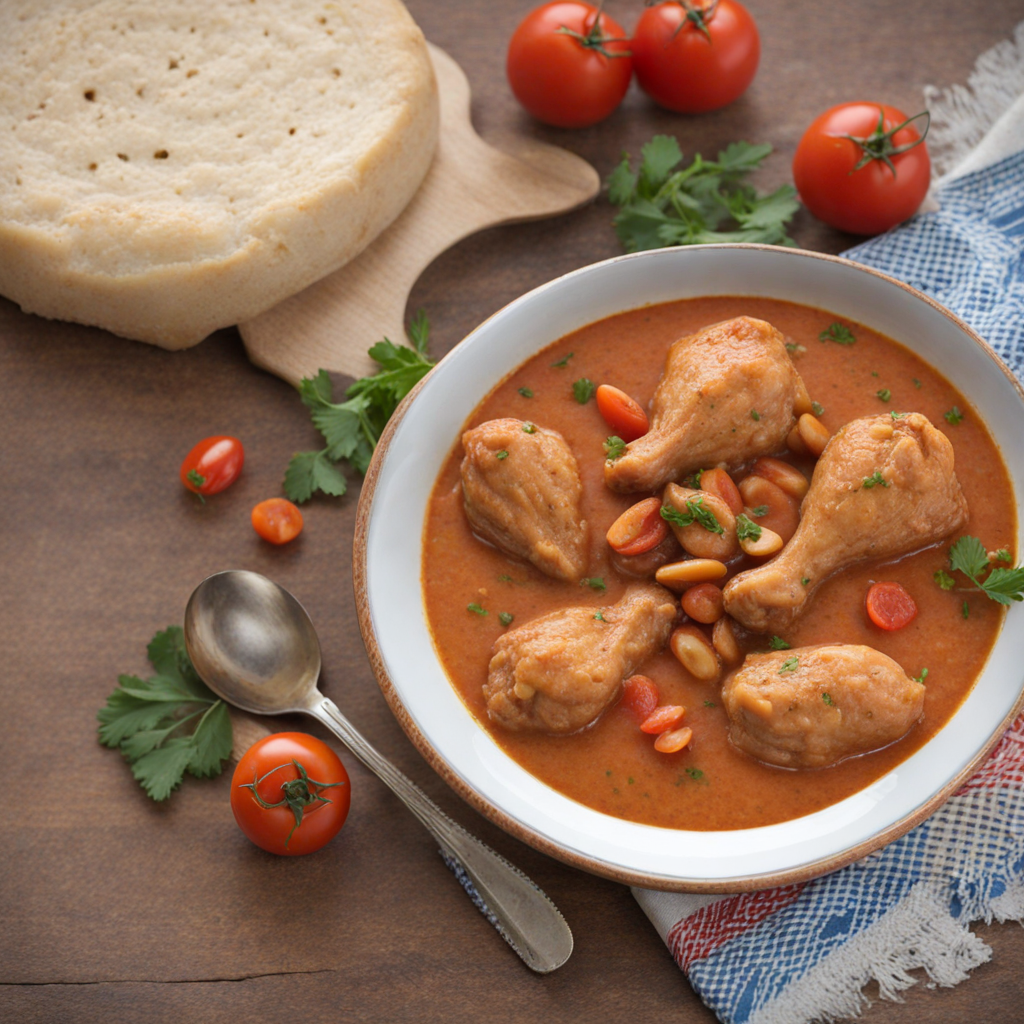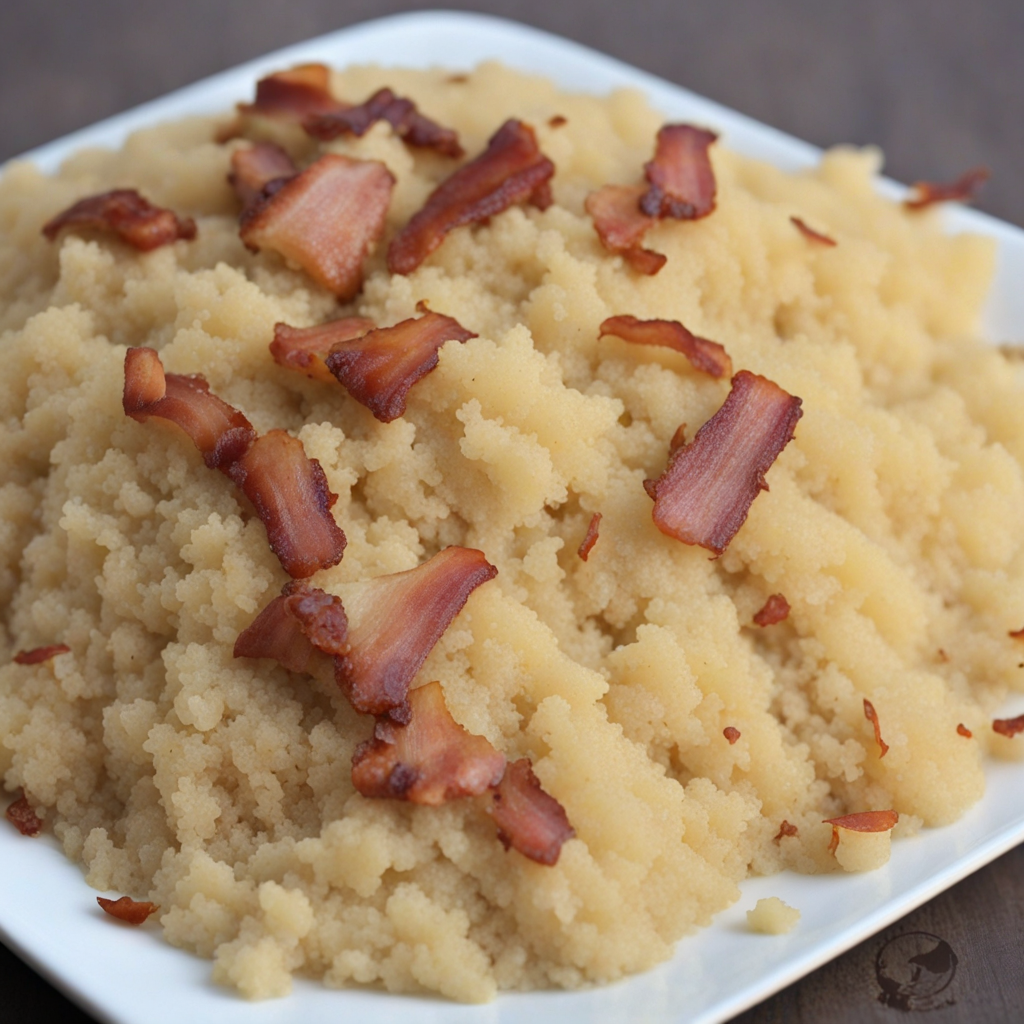Muamba de Galinha
Muamba de Galinha is a traditional Angolan dish that beautifully showcases the rich and vibrant flavors of West African cuisine. At its core, this dish features chicken, which is marinated and then slow-cooked to perfection in a luscious sauce made from palm oil, tomatoes, and a variety of spices. The use of palm oil not only gives the dish its characteristic deep orange hue but also imparts a unique, nutty flavor that is both earthy and aromatic. The combination of tomatoes, garlic, and onions creates a savory base that perfectly complements the tender chicken, making every bite a delightful experience for the palate. One of the standout elements of Muamba de Galinha is the incorporation of ground peanuts or peanut butter, which adds a creamy texture and a subtle sweetness to the dish. This ingredient not only enhances the flavor profile but also thickens the sauce, allowing it to cling beautifully to the chicken. Additionally, the dish is often seasoned with spices such as paprika, bay leaves, and sometimes even a hint of chili, providing a warm and fragrant aroma that tantalizes the senses. Each component melds together in a harmonious way, resulting in a dish that is both comforting and rich in flavor. Muamba de Galinha is typically served with a side of rice or funge, a traditional Angolan dish made from cassava flour. This pairing not only rounds out the meal but also allows you to savor every drop of the delectable sauce. The dish is often enjoyed in communal settings, bringing family and friends together to share in the experience of savoring this culinary treasure. For anyone looking to explore new flavors, Muamba de Galinha offers a wonderful introduction to the bold and diverse tastes of Angolan cuisine, making it a must-try for adventurous food lovers.
How It Became This Dish
Muamba de Galinha: A Culinary Journey through Angola’s Heritage Origins Muamba de Galinha, a beloved dish from Angola, is much more than just a meal; it is a symbol of the country's rich history, diverse cultures, and the resilience of its people. The dish, which translates to "chicken stew," is characterized by its vibrant flavors and the use of a variety of local ingredients. Its origins can be traced back to the indigenous peoples of Angola, who cultivated a rich culinary tradition long before the arrival of European colonizers. The dish is believed to have been influenced by the Bantu-speaking communities that settled in Angola over a millennium ago. These communities utilized local resources, such as chicken, vegetables, and palm oil, to create hearty stews that would sustain families and communities. The use of palm oil, in particular, is significant, as it reflects the agricultural practices of the region and has been a staple in Angolan cuisine for centuries. Colonial Influences With the arrival of Portuguese colonizers in the late 15th century, the culinary landscape of Angola began to evolve. The fusion of indigenous ingredients and African cooking methods with Portuguese flavors and techniques gave rise to a unique culinary identity. The Portuguese introduced spices, such as piri-piri, and preserved ingredients like chouriço (smoked sausage), which were eventually incorporated into Muamba de Galinha. The process of making Muamba de Galinha showcases this blend of cultures. Traditionally, the dish is prepared by marinating chicken with spices, garlic, and onions, then simmering it with okra, tomatoes, and palm oil. The incorporation of these ingredients reflects the melding of indigenous practices with colonial influences, resulting in a dish that tells a story of cultural exchange. Cultural Significance Muamba de Galinha is not just a dish; it is a cultural emblem that embodies the spirit of Angolan hospitality and community. It is often served during festive occasions, family gatherings, and celebrations, where sharing food is a way to strengthen bonds and foster relationships. The act of preparing and eating Muamba de Galinha is a communal experience, reinforcing the idea that food is a means of bringing people together. In Angolan culture, food plays a crucial role in rituals and traditions. Muamba de Galinha is often prepared for significant life events, such as weddings and baptisms, where it symbolizes abundance and prosperity. The dish is also a source of pride for Angolans, as it represents their culinary heritage and resilience, particularly in the face of historical challenges, such as colonialism and civil strife. Development Over Time As Angola transitioned through various phases of its history, including independence in 1975 and the subsequent civil war, Muamba de Galinha remained a constant presence in the lives of its people. The dish evolved alongside the nation, adapting to changing circumstances and availability of ingredients. During periods of scarcity, for example, cooks became resourceful, incorporating alternative vegetables and proteins, while still maintaining the essence of the dish. In contemporary Angola, Muamba de Galinha has gained recognition beyond its cultural origins. With the globalization of food trends and the rise of Angolan diaspora communities, the dish has found its way onto international menus, showcasing the country's culinary diversity to a wider audience. Chefs and home cooks alike are now experimenting with Muamba de Galinha, introducing new flavors while honoring traditional methods of preparation. The dish also reflects Angola's agricultural practices, with an increasing emphasis on sustainability and local sourcing. Many Angolan chefs are championing farm-to-table initiatives, promoting the use of locally grown vegetables and ethically sourced chicken. This shift not only supports local farmers but also reinforces the connection between food, culture, and community. Modern Interpretations In recent years, Muamba de Galinha has inspired a wave of culinary innovation, as chefs seek to reinterpret traditional recipes for modern palates. Some are experimenting with fusion styles, incorporating elements from other cuisines while retaining the core flavors of the dish. For instance, some chefs have introduced coconut milk for a creamier texture or added unique spices to create a contemporary twist. In urban areas of Angola, Muamba de Galinha is often served in restaurants and food stalls, reflecting its status as a popular street food. This accessibility has allowed the dish to reach a broader audience, becoming a symbol of national pride and culinary identity. The vibrant colors and rich flavors of Muamba de Galinha continue to captivate locals and visitors alike, making it a must-try dish for anyone exploring Angolan cuisine. Conclusion Muamba de Galinha is a culinary masterpiece that encapsulates the history, culture, and resilience of the Angolan people. Its origins are rooted in the traditions of indigenous communities, shaped by colonial influences, and adapted over time to reflect the changing dynamics of Angolan society. As a dish that brings people together, Muamba de Galinha serves as a reminder of the importance of community, hospitality, and cultural heritage. In a world where culinary traditions are often lost or diluted, Muamba de Galinha stands as a testament to the enduring power of food to tell stories, foster connections, and celebrate the richness of cultural diversity. Today, as Angolans continue to embrace their culinary heritage while innovating for the future, Muamba de Galinha remains a cherished dish that will undoubtedly continue to evolve, remaining a vibrant part of Angola’s gastronomic identity for generations to come.
You may like
Discover local flavors from Angola


